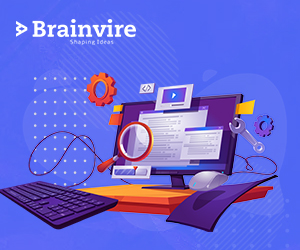
It can be challenging for online merchants to manage eCommerce returns. The increase in the sales’ profit makes the online retailers extremely happy, while the rise in the count of returned products neutralizes the happiness and excitement. It is quite common that online sellers have more return rates than offline stores, which can be because of myriad reasons.
Ecommerce management’s most significant factor is to grow customer confidence when it comes to online shopping. The retailers should manage returns to sustain the profit margins without compromising on customer satisfaction.
Cost of Low Returns Management in the Ecommerce Industry
Return costs go parallel with the e-commerce sales volume. If you handle a small scale business, you might have a few return requests. However, the large scale business owners might need to hire extra workers, manage transportation costs for picking up the return products, and get an additional warehouse for the inspection of the returned items in different sections.
Managing customer returns is even more critical for average businesses to handle as mismanagement can result in the reduction of profit margins by around 30%. Considering the reasons for returns, various studies concluded that about 21% of the returns are requested because of low quality and customer experience.
Have a Project Idea?
Want to convert your idea into a successful app or website? Schedule your free call with our expert now.
Tips on eCommerce return management that reduces cost.
Return and refund are the crucial elements of a complete product purchase lifecycle in any form of business, whether online or offline. The sellers can’t reduce the returns to complete zero, but can definitely cut down some of the return costs as per the following tips.
1. Streamlining the Return Process
Pre-planning is the key to accurate management. Every sector in eCommerce management requires the implementation of effective strategies through eCommerce development. The first thing you need to do is analyze your current return management and jot down the areas that need improvement and prepare a full-fledged plan.
The user can see how the existing team handles the returned products and have a check on how account of these items are reintroduced in the marketplace.
2. Remove Redundancy by Automation
The more the return requests, the more is the number of workers required for handling the reverse logistic. So, it makes it imperative for large scale businesses to automate the return processes for reducing the costs of workers’ wages.
But the automation can be challenging as the data in the systems may get transferred automatically, resulting in personal security threats. So, automation needs to be implemented adhering to the industry-standard practices.
3. Assess the Audit House Stocks for Returns Periodically
The eCommerce sellers must audit their warehouse periodically even if they have made advancements in return management. The retailers must look for the shipments and other relevant documentation regarding returned goods, mismanagement of which can raise the return handling costs.
And one can keep a regular check on the pickup points of the parcels to avoid the chances of wrong shipments and recording respective returns.
4. Focus on Releasing Return Policy as Per the Needs
Around 90% of the online viewers check customer reviews even before placing orders. And various studies have concluded that approximately 25% of the products that got excellent and satisfying reviews got lesser return requests. The sellers can make their reviews work positively for them by getting in touch with online apps that give reviews, and leverage that to pre-manage returns.
5. Work for Customer Interaction
Consumers prefer following the easy-to-follow return processes, and around 80-90% of them would not go for return if the process is hard to follow. Sellers must follow up with the customers to get feedback after completion of the return process and should also interact via e-mail to know about their personal shopping experience. The retailers can also conduct an automatic survey for that.
Customer Retention is a Derivative of Apt Returns Management
Returns can play a vital role in customer retention as easy return policies boost up the customer’s confidence to make purchases. Merchants should keep their return policies updated to attain the highest level of customer satisfaction. But in this, one should not forget to reduce the hassle in the return process.
Sellers should maintain complete transparency as they can provide a detailed description of the products, including their color options, size, previous users’ reviews, and online ratings so that the new customers can make an informed buying decision. It will further reduce the return requests.
Reduce the Flow of Returns for Fewer Complexities
Fashion retail is a kind of personal shopping, and customers have an exhaustive list of options. Most customers may want to get an idea that the particular items will suit them or not even before placing the orders online, which is challenging to provide. But the eCommerce retailers are overcoming this issue with offline sales and digital retails.
How Can You Reduce Returns?
Customer satisfaction is the key to success when it comes to online shopping, especially when the market is highly competitive. The retailers must provide in-depth details of the product and give the size guide for customers’ convenience.
Moreover, the sellers can implement effective strategies to ensure that the product lives up to the customers’ expectations. They should also ensure that the customer can find the accurate size information and get the right fit clothes to avoid return requests. All-in-all, the sellers must describe the product as well as possible.
Managing Customer Expectations
The chances of return decreases if the product delivered fulfills the consumers’ expectations. So, it is essential to predict the customer’s requirements, which is being carried with inclusion of the latest technologies that predict, through search behaviour, about the product they might buy.
Online Retailers Can Make Changes to the Descriptions for the Better
Maintain Transparency Regarding Product Details
A detailed description, including even the granular details for the products, will let the customers have complete knowledge of what they are ordering and will receive. The sellers should pay attention to describing the product instead of promoting them.
Most importantly, you should avoid false claims to make considerable reductions in the return requests. The sellers must try to be honest regarding the fabric’s quality and should use words like rough, thick, soft, or maybe light/heavy for mentioning the comfort it will provide to the user.
Explain the Right Size
Clothing sizes mentioned and the fittings have a huge difference sometimes. As an online seller, it becomes tricky to give an idea of fittings to customers. It is only when customers try the stuff on, they realize the quality of fittings.
The sellers can make the process a bit more convenient for the customers to decide on their accurate size by mentioning the measurements of the model who is wearing the garment in the pictures. This will help the customers decide what style is the best.
Include Realistic Pictures
Attractive and descriptive product pictures are mandatory. These close-ups help customers see the product from close and let them get an idea of how the fabric actually feels. Online buyers try to compare the stuff with some fabric they have worn or felt and they have thought initially to buy. This will let them know about the comfort level of the material used for making that garment.
Conclusion
In a nutshell, sellers must focus on including consumer experiences as it will convince customers to buy the product, and not return it. Also, retailers can also increase the return recovery value to transform their losses in the form of return to profits. This return management holds a special place in customer retention as the fast return processes will encourage them to place orders from the same retailer from next time onwards.
Overall, managing customer returns and retaining their utmost satisfaction is the right key to excelling in the online market. You can contact Brainvire if you are looking for Magento Development Services for your business.



